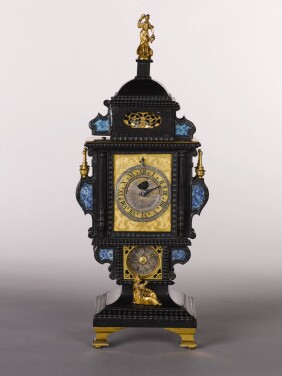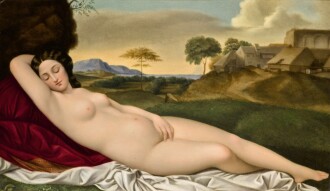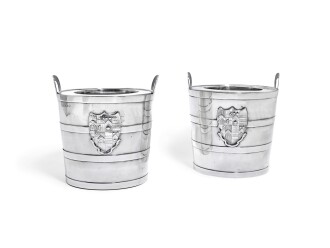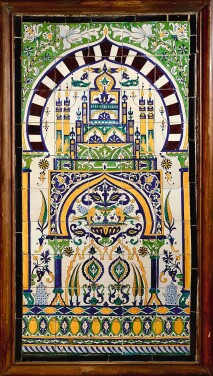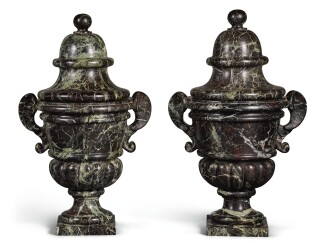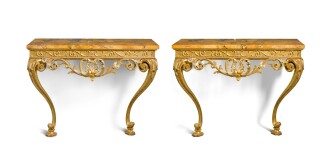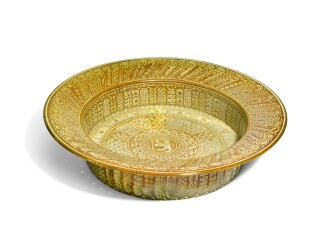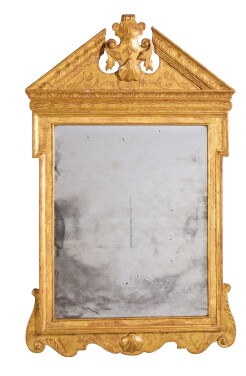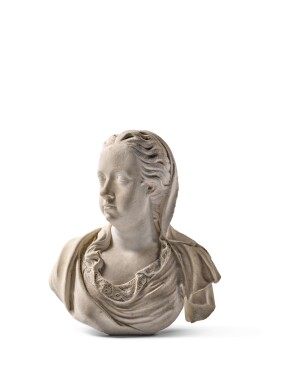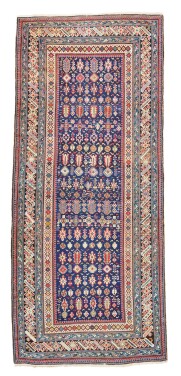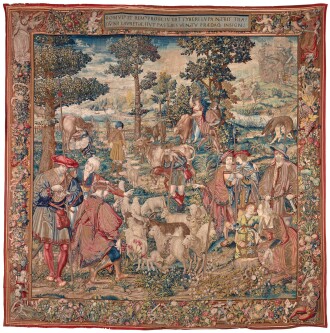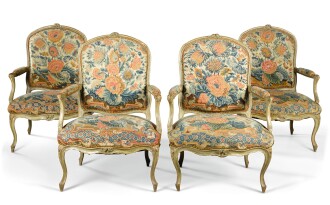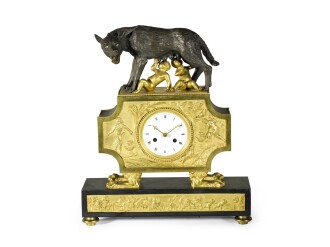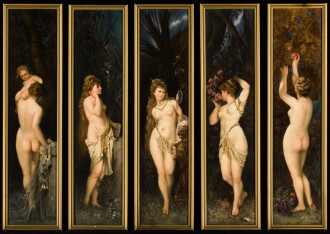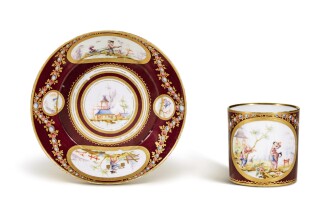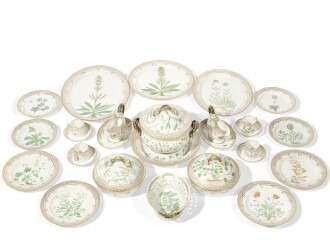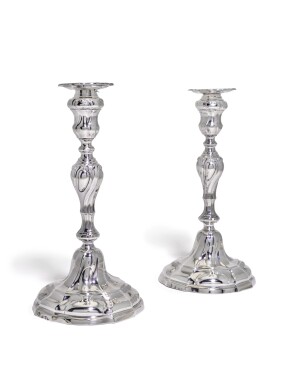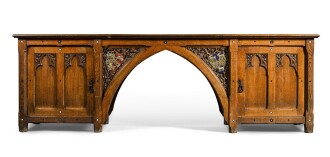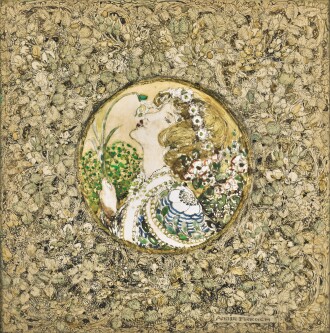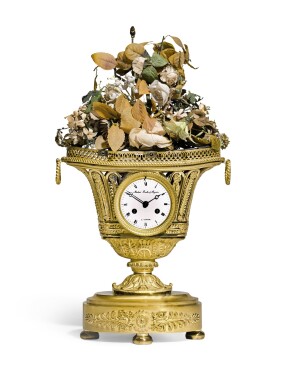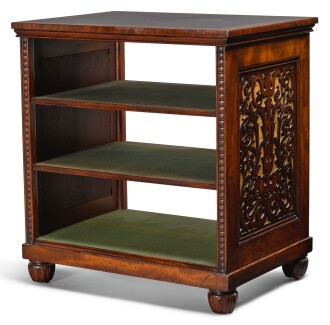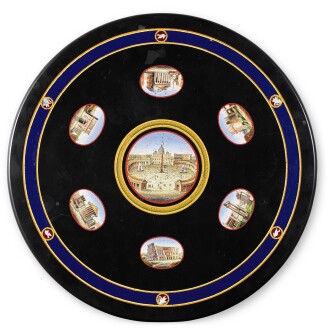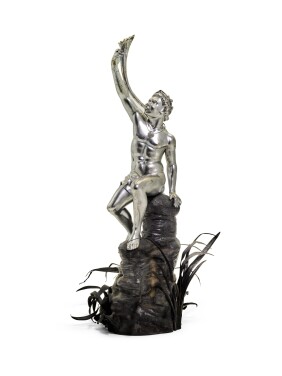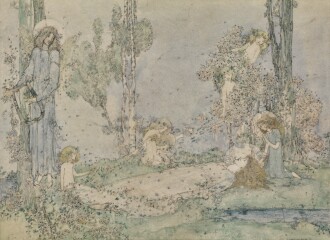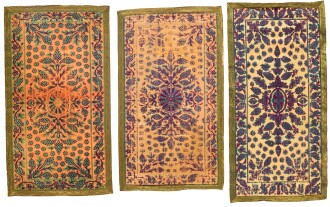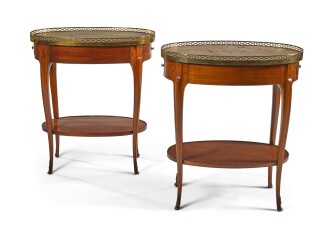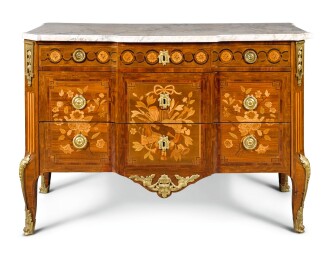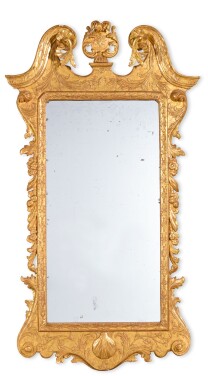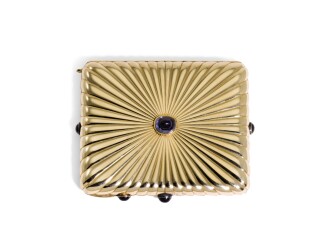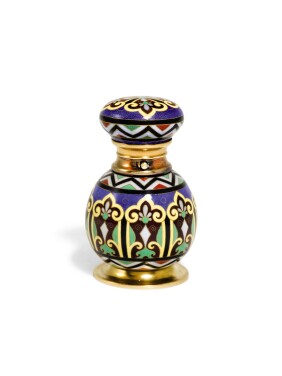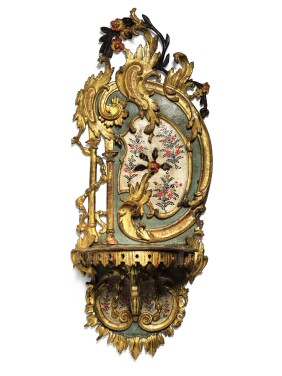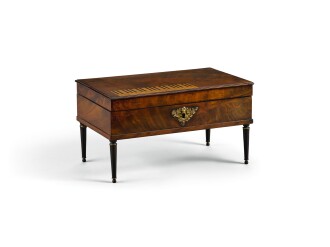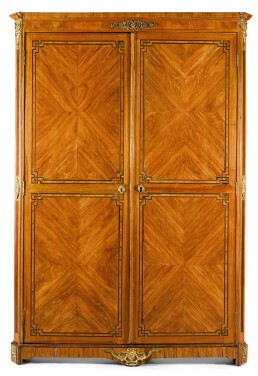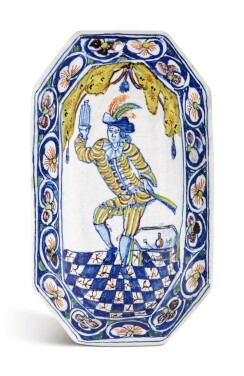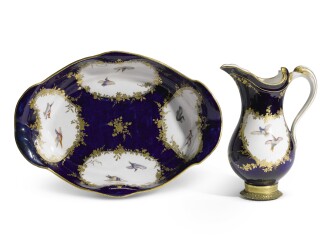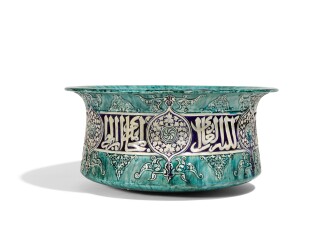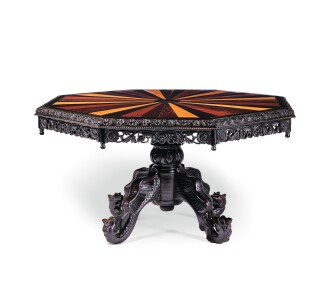C urating @Home has given us a glimpse into some extraordinary homes across the British Isles and further afield. A veritable kaleidoscope of objects including decorative art with aristocratic provenance from a dreamy cottage on the Chatsworth estate, furniture acquired over a lifetime from the island home of dealer with the sharpest of eyes, Islamic tiles and sculpture from the Bloomsbury townhouse of one of Britain's greatest post-war artists and a trove of superb late Renaissance clocks fastidiously collected with great passion. The cliché that 'there is something for everyone' could not be truer with the much loved objects that follow: something for everyone, something for every home. Now it is time for these objects to find new homes and to be loved again.
The works that follow represent 500 years of creative endeavour in the Fine & Decorative Arts. Twelve departments at Sotheby’s are represented, with collecting categories including, ceramics, clocks, English and Continental furniture, European sculpture, Islamic works of art, objects of vertu, rugs, silver and textiles to name but a few. It should also be noted that many of the wonderful objects in this online auction are to be sold without reserve.
Featured Highlights


- IN THE HALL
George III mahogany carved fretwork longcase clock, circa 1780
Estimate £800–1,200 - IN THE GARDEN ROOM
Louis XVI gilt-bronze mounted mahogany jardinière by Georges Jacob, late 18th century
Estimate £8,000–12,000 - IN THE DRAWING ROOM
A Sèvres porcelain Chinoiserie cup and saucer, 1781
Estimate £3,000–4,000 - IN THE DINING ROOM
A George IV silver-gilt six-light table centrepiece/candelabrum, Paul Storr for Storr & Mortimer, London, 1824
Estimate £15,000–25,000 - IN THE LIBRARY
A calligraphic carved wood panel with traces of polychrome paint, probably Seljuk Anatolia, Konya, 13th century
Estimate 4,000–6,000 - IN THE STUDY
A quarter striking astronomical masterpiece clock with alarm, Johann Peter Mayr, Augsburg, circa 1740
Estimate 12,000–18,000 - IN THE BEDROOM
A pair of Italian giltwood and verre églomisé oval mirrors
Estimate 2,000–3,000 - IN THE DRESSING ROOM
A Berlin (K.P.M.) porcelain rectangular plaque, circa 1890
Estimate £7,000–9,000 - IN THE LANDING
A Chi-Chi Long Rug, East Caucasus, 19th century
Estimate £1,500–2,500
The Hall
Traditionally a space of commonality, and historically a place where a great fire was kept, often heating the whole dwelling. In the Iron Age and early Middle Ages, the Hall was where the leader of a community slept alongside retainers and servants. A place to eat, sleep and celebrate. In larger houses and more formal buildings, these spaces were adorned with the best pictures and furniture. In more typical homes, most of us see the Hall as a place of welcome and a practical connecting space.
The Drawing Room
In 18th-century London, formal morning receptions known in France as levées were called ‘drawing rooms’. The term originates from the 16th century, when in larger homes there was a withdrawing room or withdrawing chamber. From the 16th to early 18th century, this was a space where the owner of the house or a distinguished guest could withdraw for privacy. It was often positioned next to the smartest room in a grand house and usually led to a formal bedroom reserved for the very best guest. In the 18th and 19th century, the drawing room became the best of the reception rooms in a home that could accommodate one, and was for special occasions and important visitors. It was a room for displaying fine possessions. In the Georgian period, chairs and tables were positioned along walls so the floor was free of furniture to allow for dancing and movement.

The Dining Room
A formal place specifically for eating. Initially these were smaller rooms designed for more intimate gatherings away from a large household. Sometimes recorded in historic inventories as 'parlers' or 'privee parlers'. From the late 17th century, dining tables evolved to be more adaptable and more portable – different from the great table or refectory table found in the Hall. Culturally the space was important for discussion and debate, and towards the end of the 18th century, female guests and family would have to withdraw after dinner leaving male diners alone to converse. In formal settings, sideboards were used as places for display. There were often alcoves and niches conceived to hold the best accoutrements required for a dinner party, with elaborate containers to hold fruit, wine, cutlery and even heat plates.

The Study
The study has evolved from the closet or cabinet of the Renaissance. A private room for academic study or contemplation. Sometimes a place for rare and exotic objects. The term appears more often from the end of the 19th century, as a space within a domestic setting. Occasionally in country houses, similar rooms are called called the audit or business room and more recently have been christened the home office.
The Library
The first libraries were archives – stores for clay tablets in cuneiform script from 2600 BC. Private libraries made up of written books appeared in classical Greece from the 5th century BC. In the great monastic, university and cathedral libraries of Europe, these spaces had to be secure and were often finely appointed: a reflection of the extremely costly commodities within. In the Renaissance, these spaces demonstrated the intellectual nature of the works they held architecturally. Possessing a library was the preserve of the rich. In 1667, Samuel Pepys commissioned special bookcases or ‘presses’ for his books, now at Magdalene College, Cambridge. Personal libraries in the 17th and 18th centuries were richly decorated and in Britain, often the repositories for Grand Tour souvenirs and collections which could include coins, minerals, drawings and prints – an extension of the Northern European Kuntskammer or cabinet of curiosities. Aside from the more functional furniture, superb objects were often displayed, usually to demonstrate the intellectual dexterity of an owner.
The Bedroom
In the 16th, 17th and early 18th centuries, the grandest bed chambers were considered important reception rooms. State Bedrooms were those used by a Monarch or head of state. In the wealthiest houses these room were decorated extravagantly, walls perhaps hung with luxurious silks or tapestries, but the centrepiece was always a tester bed, often the most expensive piece recorded in contemporary inventories. These large beds were often raised on a dais, or within an alcove like that at Ham House in Richmond. In these great houses, guests could be received in a chamber that was a climax to an enfilade of reception rooms.
The Dressing Room
Historically these small rooms or closets were the most intimate spaces within a house. In some instances, furnished as small sitting rooms. Where a noble lady could attend to her ‘toilet’ using a costly service. These rooms were reserved for the lady of a grand house, in addition to a space that is similar – the boudoir. The term derives from the French verb bouder (to sulk or pout) or the adjective boudeur (sulking), intimating a place for retreat.
The Garden Room
This traditional ‘indoors-outdoors’ space for horticultural pursuits is often thought of as originating in the Victorian era, with the great glass and iron structures created at Kew, and in 1851 for The Great Exhibition. However, the idea of creating a dedicated space for growing heat sensitive plants is much older. From the 16th century, traders bringing citrus fruits from the Mediterranean to the tables of the wealthy created a demand and desire to cultivate fruit in Northern Europe. In Italy, outdoor pots were often brought in during Winter into a protected area: a limonaia. Outside, wooden structures were conceived to protect. During the 17th centuries, in the low countries, glazed angled roofs appear to maximise the benefits of the sun. For the most part though it was the Victorians, using mass production and the new and exciting materials available to them, that made conservatories on a domestic scale their own. Those attached to great houses were furnished with exotic tiles, ceramic garden seats and unusual planters.

